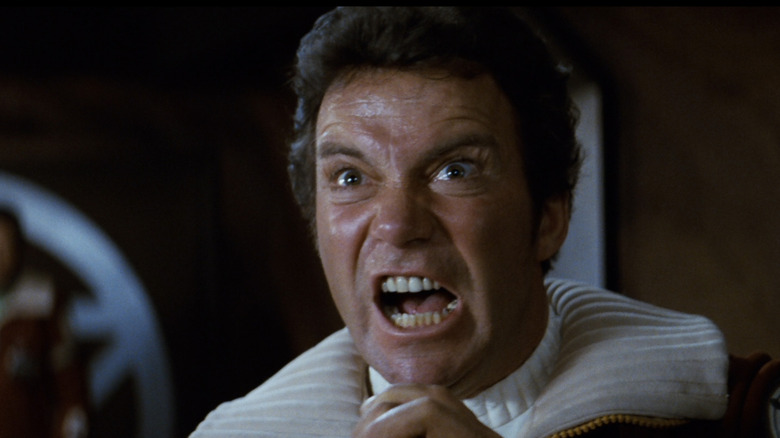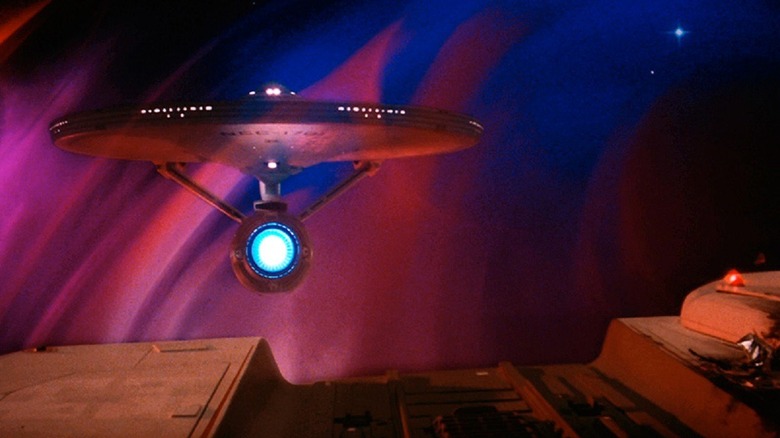Paramount Pictures
In his 1967 essay “The Death of the Author,” French philosopher Roland Barthes argues for the separation of a work’s meaning from the author’s intention, effectively allowing the reader’s personal interpretation to take precedence. This theory, which has gained widespread acceptance due to the diversity of voices today, is particularly applicable to television and film. These mediums are collaborative efforts, involving dozens or even hundreds of people, and are not solely the product of a single mind.
However, it can be challenging to disregard the explicit intentions of a work’s originator, especially when those intentions seem to evolve over time. This was the predicament faced by Nicholas Meyer, Harve Bennett, and the team behind “Star Trek II: The Wrath of Khan” in their interactions with “Star Trek” creator Gene Roddenberry in the early 1980s. While the Roddenberry who helmed the original “Star Trek” TV series may have been comfortable with Meyer and Bennett’s vision for the film, the Roddenberry post-“Star Trek: The Motion Picture” was a changed man. He believed that “Star Trek” should be headed in a different direction from the one being pursued by others.
He felt that it should have been his way. Long before he successfully steered the franchise in his desired direction with “Star Trek: The Next Generation,” Roddenberry had some harsh words for the team behind “Khan.” As Meyer recently revealed, these were not pleasant words.
Meyer ‘blacked out’ Roddenberry’s vitriolic memos to him

Paramount Pictures
The production of “The Wrath of Khan” was far from a smooth process. In a recent interview with TrekMovie, Meyer shared that he had to write a shooting script for the film in a mere 12 days to keep everything on track, including the visual effects work from ILM, and meet the planned release date of June 4, 1982. After a grueling schedule of “shooting in the day and editing all night,” the final cut of “The Wrath of Khan” barely crossed the finish line. The fact that it turned out not just good, but arguably the best “Star Trek” movie ever made, is nothing short of miraculous.
Given the chaotic schedule, it’s not surprising that Meyer’s recollection of the entire process is somewhat foggy 42 years later. The film’s generally positive reception and its lasting influence have allowed Meyer to mostly remember the positive aspects of making the movie, particularly the audience’s enthusiastic response upon its first viewing. What Meyer didn’t remember until this interview was his bitter dispute with Roddenberry during the film’s production, a feud that played out entirely in memos:
“…people asked me for years what was my interaction with Gene Roddenberry. And I said, well, you met him. You had to shake his hand and so forth, but he wasn’t part of making the movie, which was certainly true. But when I went back to my alma mater, the University of Iowa in Iowa City, I went to the library where they have all my papers, and I was stunned to see an exchange of memoranda between me and Gene Roddenberry that I had totally blocked out. Once I read them, I understand why I blocked them. It was very toxic, very venomous. He hated the script. I guess I didn’t know any better, so I was intemperate. I responded intemperately. And I had just blocked all memory of this.”
How Wrath of Khan gave Star Trek fans what they needed, not what they wanted

Paramount Pictures
For a detailed analysis of why Roddenberry was so displeased with the script for “The Wrath of Khan,” refer to this piece by /Film’s Witney Seibold. In essence, Roddenberry was not happy with the film’s more adventure-oriented approach. This would likely not have been an issue for Roddenberry during the production of the TV series for a couple of reasons. Firstly, many episodes of the show were adventure-oriented, including “Balance of Terror,” which, like “Wrath of Khan,” was directly inspired by 1957’s “The Enemy Below.” Secondly, Roddenberry had not yet come under the sway of the large group of Trekkers (or Trekkies), “Star Trek” fans who played a significant role in keeping the series on the air and reviving it.
In 2024, we understand the detrimental impact fandoms can have on art and culture; they are a prime example of why art should never be created by committee. However, in the ’70s and ’80s, they were a relatively new phenomenon, showing studios and creators how they could make or break a franchise. Through his interactions with these fans, Roddenberry began to believe that “Star Trek” should set itself apart from genre norms, using its established concept of a utopian, progressive future society to promote ideas of conflict avoidance, diplomacy, intergroup collaboration, and so on. While these are all admirable goals, they do not necessarily make for compelling drama. While Roddenberry’s vision of a new “Star Trek” would eventually become more refined, allowing the franchise to continue to flourish to this day, it experienced some growing pains, most notably during the production of “The Motion Picture” and “Khan.”
What Meyer, Bennett, and the rest of the “Khan” team were doing was adhering to some of the fundamental principles of drama. They made creative decisions that might have seemed potentially unsatisfying on paper but turned out to be fantastic when executed brilliantly. The death of Spock (Leonard Nimoy) was one such decision, which Roddenberry tried to rally the fandom against, but it ended up becoming an iconic moment in “Star Trek” and film history. The lesson of “Death of the Author” is not about a “correct” or “incorrect” interpretation of a work. Instead, it’s about liberating oneself from objectivity in art: you never truly know until you experience it for yourself.
Credit: www.slashfilm.com


